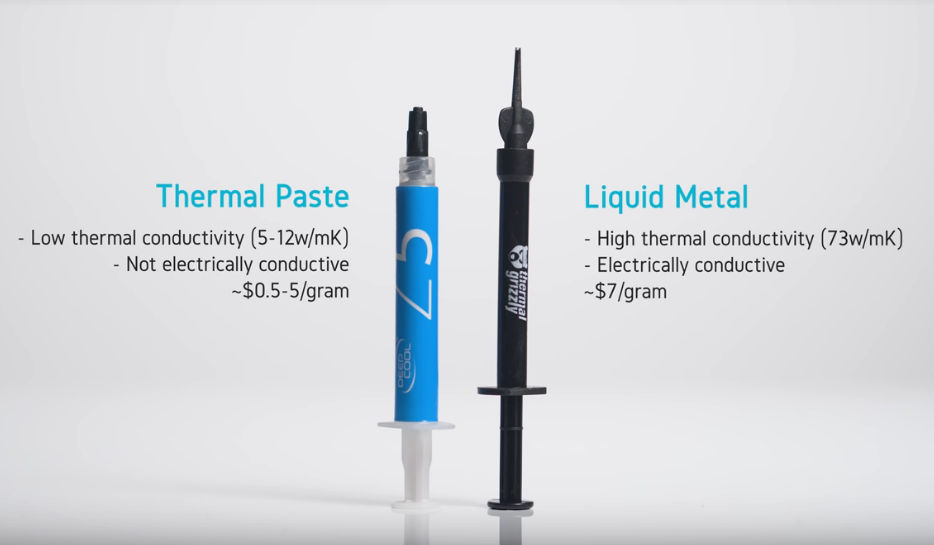Whether you’re a casual PC user, an avid gamer or an enthusiast like me, you’re bound to need to maintain your PC, if not build one from scratch. An important part of maintenance is checking if your PC runs on the optimum temperature ranges and does not exceed the higher limits. Heat management plays a crucial role in the performance of the PC and if not cared for properly can lead to bottlenecking, lagging and in extreme cases can even cause components to burn out and malfunction completely. Therefore, it comes as no surprise that there’s a whole industry catering to heat management, more specifically to thermal paste that increases heat conduction between a CPU or GPU and its heat sink.
Not too long ago, caring about thermal paste and its types and differences was a rare occurrence and only a limited number of people were interested in anything related to thermal paste, but this has changed over the past few years. Now, a growing number of people learn a great deal about thermal paste, its different types, pros and cons before purchasing one that suits their needs. One dilemma they have is to choose between conventional thermal paste or liquid metal, both of which act similarly and are used for the same purpose. In this article, we’re going to tell you all you need to know about the difference between thermal paste and liquid metal.
Thermal Paste
Thermal paste is basically a superconductive paste which is used to fill the micro gaps on the surface between two objects, primarily a CPU/GPU and its heat sink. Thermal paste works by filling those microscopic spaces which allow air to be trapped. Since air is an insulator it reduces the ability for heat to transfer efficiently between the CPU/GPU and its heat sink. The thermal paste fills those gaps and allows efficient heat transfer between the two components, thereby increasing efficiency and decreasing the overall temperature of the component. There are a few different types of thermal pastes: Silicon-based, Ceramic based and Metal-based.
Metal-based is by far the most popular and effective thermal paste available but it is electrically conductive as well. So, if too much of it is applied and it spills, it can lead to short-circuiting and inefficiency overall. If you’re looking for a product that suits your needs: here’s a list of different thermal paste types to get you started with.
Liquid Metal
Liquid metal works exactly like thermal paste: it fills the microscopic gaps on the surface between the CPU/GPU and its heat sink. The difference lies in its composition and properties. The main component of liquid metal is Gallium. It’s a soft metal with a low melting point and a high boiling point. When it’s combined with the other components and metals like Indium, the melting point falls to -19C. This is why the compound remains a liquid at room temperature. There’s little to no evaporation due to it having a relatively high boiling point of 1300C.
The exact composition of the compound differs from product to product, however, they all have similar properties. They’re all electrically conductive. This fact plus the fact that the alloy has a liquid form makes it difficult to use and apply. You have to be extra careful to not spill any over which could lead to short-circuiting and component failure. However, liquid metal is significantly better at conducting heat. But unfortunately, it can not be used with aluminum heat sinks since the Gallium reacts with the aluminum. That shouldn’t be much of a problem since most heat sinks are made of copper which is nonreactive with the liquid metal.
The differences that matter

Liquid metal provides up to 73 W/(mK) thermal conductivity which is much higher than the 0.5-12.5 W/(mK) thermal conductivity provided by conventional thermal pastes.
Thermal paste isn’t as good a conductor of heat as liquid metal. Therefore using liquid metal for builds which you expect to be overheating and need the best results for; you’d be better off choosing liquid metal.
If you’re a casual customer and don’t intend on using your components at a high temperature, you’d be just fine using any good thermal paste which is much easier to apply and use. Liquid metal, however, is much more difficult to apply and needs to be brushed on carefully which can be a nuisance.
Liquid metal is always electrically conductive which can lead to problems down the line. However, you can choose thermal pastes which aren’t electrically conductive and you can use them with ease and not worry about short-circuiting any of your components.
Thermal paste is more budget friendly but most liquid metals are significantly more expensive and that may lead you to reconsider its worth altogether.




Tim Dodge says
Apply silicone caullk outside the thermal area, install the heatsink and allowing it to cure then remove the heatsink, apply liquid metal and reinstall the heatsink.